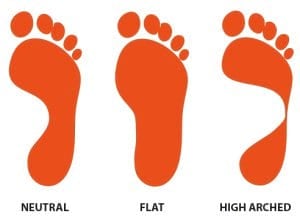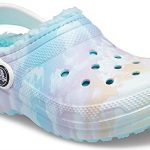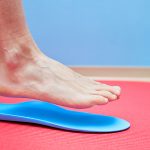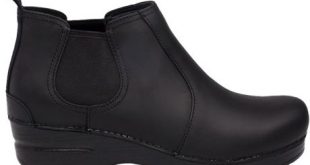It is important to know the arch type to identify and purchase shoes that can support the body’s weight satisfactorily to relieve foot aches and avoid injuries such as plantar fasciitis that can cause inflammation of the ligaments to pain in the heels.
Different types of Foot Arch
We should recognize our foot arch type because each has a distinctive and specific set of benefits and drawbacks. Human physiques are distinct and no foot arch type is superior to another foot arch. So, it’s very important to know our foot arch type.
The three types of foot arches are as follows-
Low arch/flat feet
Low arches occur if the foot nearly or completely touches the surface, i.e., ground or floor, while standing straight.
The person possessing a low arch is also recognized as a pronator, and around 20% population has a low or flat feet type.
The basic characteristic is a particularly flexible foot with an arch that perches low to the turf or surface. It has a relatively slight arch definition.
Low arches are further flexible and manage to roll inwardly and over-pronate. Pronation is a word used to describe the inward leaning motion or movement towards the arch. The amount of pronation coordinates or interconnects with the arch height. The more the person pronates, the flatter the arch will be.
If the person’s footprint looks like an exact complete foot, they have a flat arch, and their foot possibly rolls in while walking or running.
There are some intricacies related to low arches due to their association with biomechanical imbalance. There are several issues that a person with a low arch is prone to.

The potential problems that might arise are as follows:
- Over-pronation
- Post-tibial tendonitis
- Plantar fasciitis
- General medial knee issues
- Heel spurs
- Bunions
The low arches may contribute to muscle, stress, strain, and joint problems. Low arches are frequently biomechanically imbalanced and could make the feet more sensitive to known foot problems such as heel pain.
The person with low arches benefits from a walking shoe with a straight last and motion discretion to help steady the feet. Good footwear and foot orthotics can help to attain appropriate body alignment and also help to prevent injuries.
Execute the following to look after and care for the feet-
- Use the foot orthotics designed to aid low foot arches.
- Must pay a visit to a Podiatrist for therapy and advice.
- Always wear appropriate footwear for flat/low feet.
- If the person is suffering from serious heel and arch pain, then surgery must be done.
The above measures can help to maintain a healthy and active lifestyle.
read more:7 Best nursing shoes for flat feet
read more: Are Dansko shoes good for wide feet?
Medium/normal arch
The basic characteristics of this arch are that it is biomechanically efficient, relatively flexible, and has a defined arch.
If the middle portion of the arch is about half-filled, then it is a normal or medium arch. This arch naturally supports the body weight and pronates under a typical load.
The imprints or iStep scans for a person with a medium arch show nearly half of the arch area with a well-defined forefoot and rearfoot. The normal or medium arch has the middle part of the arch almost raised from the ground or surface while bearing the weight. The medium arch person is aided with additional cushioning, support, and shock absorption mechanism, which thoroughly prevents foot or arch aches.
The medium arches are most common and found in almost 60% of the world’s population. Neutral foot arches fall in this sector. The person with a medium arch requires less support on the feet as their hips, ankles, and knees align very easily.
Medium arches are often biomechanically efficient but might be liable to familiar foot problems and disorders such as ball-of-foot discomfort of heel pain.
Potential problems of medium arches:
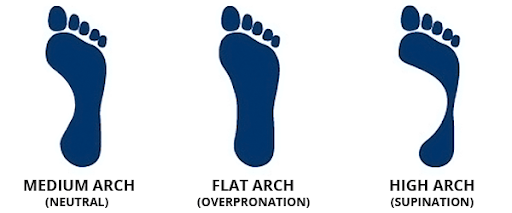
The common foot problems are heel pain and metatarsalgia from repetitive stress and improperly fitting footwear.
If the proper care of the feet is not taken for years, the arches can collapse as the age increases. The insole design must be used for good maintenance of the feet and proper stability.
High arch
This is a very stiff or inflexible foot with an arch perching higher from the surface or ground. This well-defined arch gives undue and extreme pressure to the hindfoot and foreleg.
In the high arch foot type, also known as cavus foot, the heel and the ball carry most body weight. The person is a supinator if they have a high arch.
High arches are a genetically inherited condition where the arch is much higher or raised than normal ones.
Almost 20% of the world’s population has high arches. High arches are generally categorized as supinated and are more inflexible than others.
There are some intricacies related to high arch feet as it is more rigid compared to others. Generally, imprints of this foot type show primarily the ball-of-foot and heel, with very limited in the arch area. While walking or running, the feet absorb maximum trauma and shock. But with the high arches, there is a slighter surface area for absorbing effect. Possibly some foot conditions may arise like heel ache, ball-of-foot pain, or plantar fasciitis.
Some conceivable problems that a person having high arch are prone to are as follows:
- Heel pain
- Arch stain
- Calluses
- Metatarsalgia
The positive thing is that the correct orthotics could help fill the arch cavity or void to distribute the shock and procure a good cushioning effect and the necessary alignment required to prevent the injuries. Orthotics must have proper arch support and metatarsal pads for forefoot relaxation. The proper footwear must be worn for high arches.
read more:Are Dansko shoes good for high arches?
read more: best shoes for nurses with high arches
Is it essential to know the foot arch type?
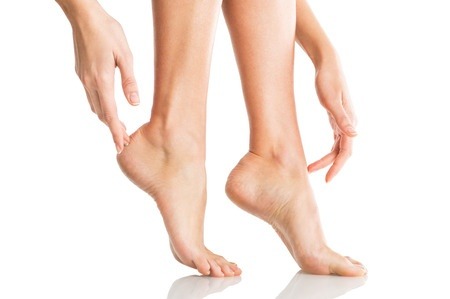
Yes, it’s completely important to know our arch type. To take satisfactory care of our feet with appropriate knowledge, it’s necessary to know our foot type. Few familiar health cases coming up from wearing wrong footwear are as follows:
- Callus
- Blisters
- Painful knees
- Ingrown toenails
- Swelling in feet and ankles
- Hammertoes, etc
Different ways to determine the arch type
The most practical and easiest way to determine the arch type is to do a simple ‘home water test.’ Just pour some water into a shallow pan, then insert the foot to wet the sole of the feet, and then step onto a piece of paper. The following will be observed according to the arch type-
- Low arch- the arch is mostly filled in.
- Medium arch- half of the arch region.
- High arch- the arch region is little or no arch.
Along with the wet test, other methods such as the wear test and by looking at the side of the foot, the arch type can be determined.
 Nursing Trends
Nursing Trends
